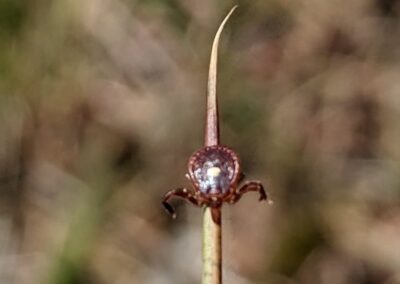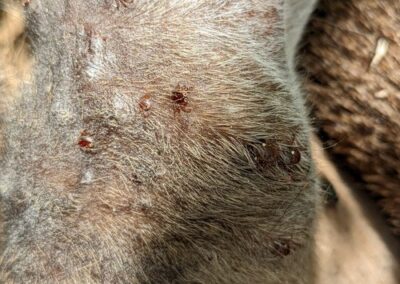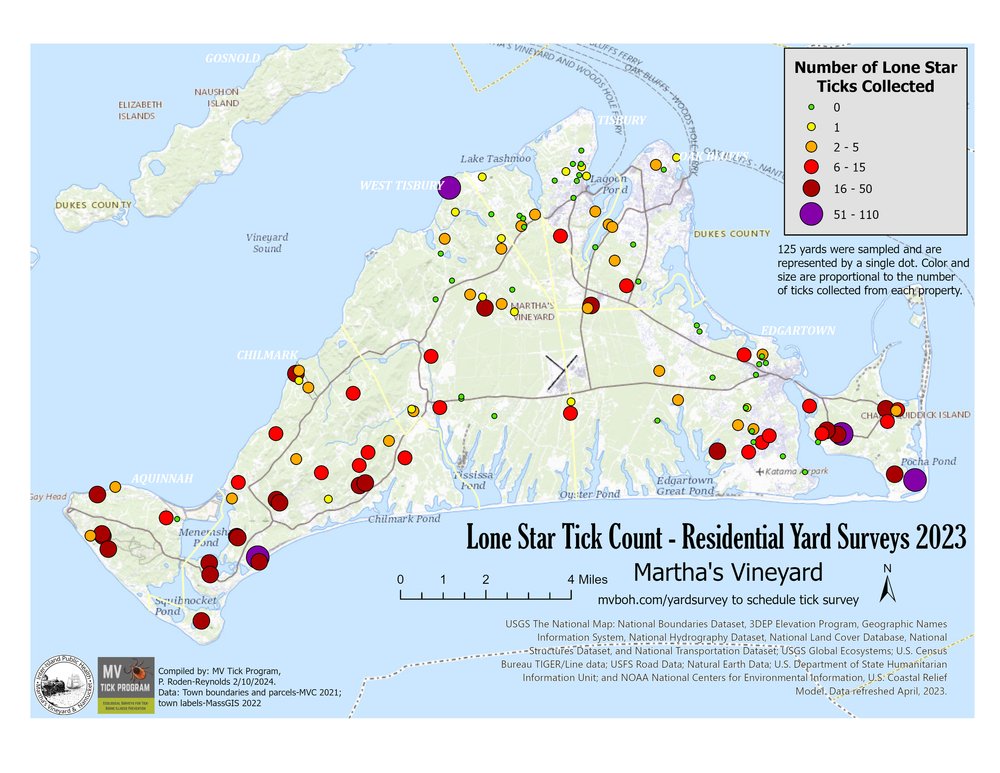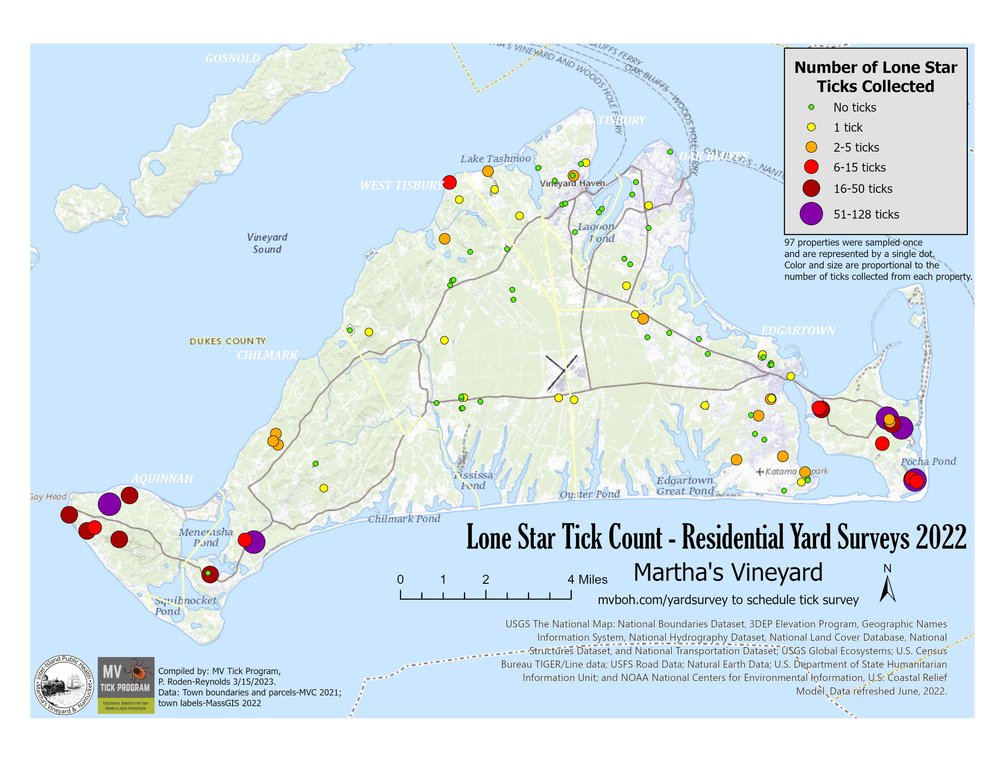Protection and Education
The Lone Star Tick
Lone star ticks are prevalent throughout Martha’s Vineyard and are also present on Nantucket, albeit in lower numbers on the island’s western side, while Tuckernuck Island boasts a high population of these ticks.
They can transmit a range of diseases, including Ehrlichiosis, Southern tick-associated rash illness, and Tularemia, and are notably the primary cause of Alpha-gal Syndrome in the United States.
On Martha’s Vineyard, lone star ticks are typically active from March to October, with adults and nymphs, which pose a risk for disease transmission and Alpha-gal Syndrome, being most active from April to August.
Although larvae do not transmit diseases, they can induce sensitivity to Alpha-gal and often appear in clusters dubbed “tick bombs,” comprising 50 to over 500 individuals that can deliver irritating bites; larvae are primarily active from late summer to October.
These ticks thrive in diverse habitats, from open grassy fields to dense forests filled with leaf litter, and both nymphs and larvae have been found in mowed lawns with grass less than five inches tall.
Compared to deer ticks, lone stars are relatively quick and aggressive biters, making it crucial to use repellents such as permethrin and wear long-sleeved clothing that is tucked in to minimize the risk of bites.
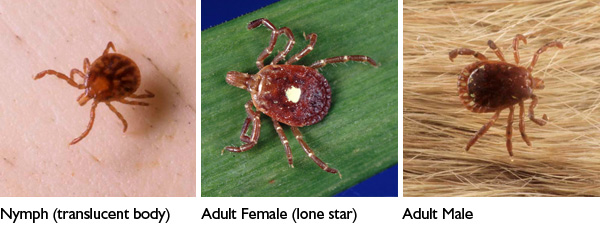
Lone Star Ticks
Diseases Carried: Ehrlichiosis, Southern tick-associated rash illness (STARI), Tularemia, Bourbon virus*, Heartland Virus*; believed to cause Alpha-gal Syndrome
* Most cases of Bourbon Virus or Heartland Virus are reported from Midwestern and Southern United States
Approximate Sizes (Larve, Nymph, Adult Male, Adult Female):
![]()
Tick-Borne Illness Resources
Identify Tick Species
Types of Ticks on the Islands
Lone Star Tick
Common on the Islands
Alpha-Gal Syndrome
Learn About AGS
Public Presentations
Browse Tick Presentations
Video Resources
Informative Tick Videos
Yard Surveys
Residential Yard Surveys


